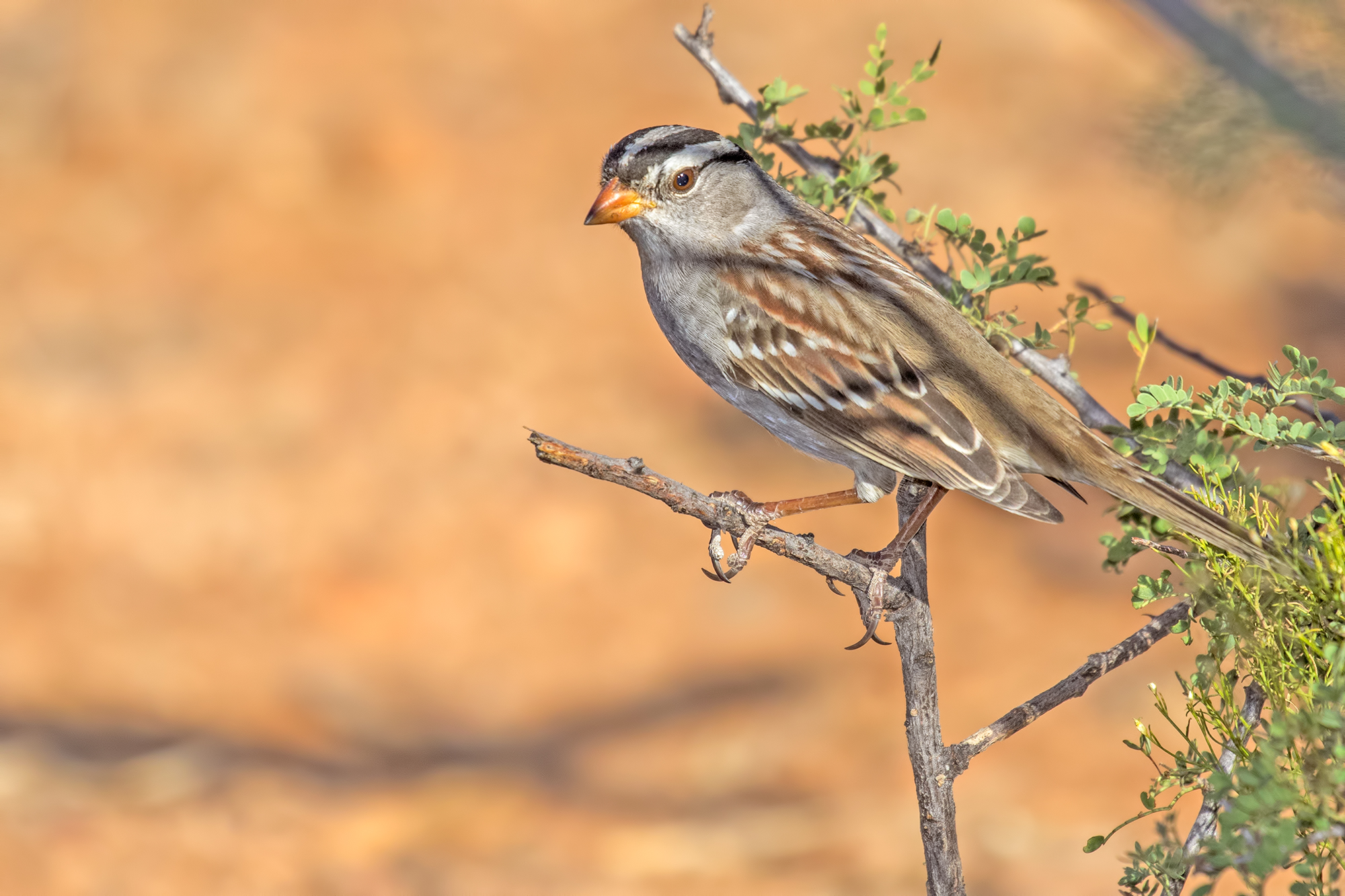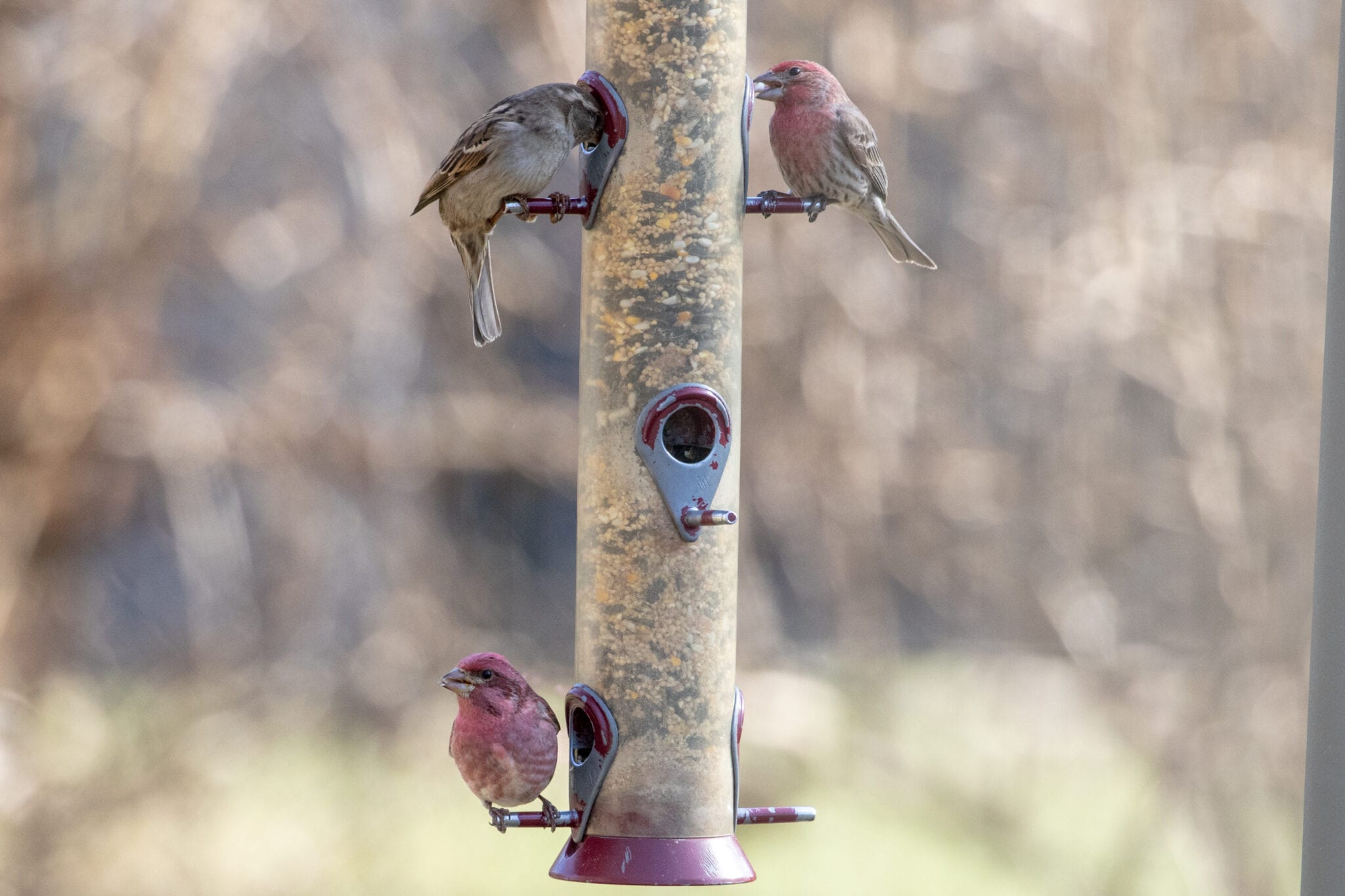

Now that this mystery has been solved, let’s take a look at other birds that you might think could be the ever-present sparrow. These birds with red chests have a pretty song that is a typical environmental sound in many regions of the American continent. The sparrow-like bird with red head is pretty common and their widespread population is enough for them to be a species of Least Concern for the IUCN. These birds are widespread due to being sold illegally on the East Coast of the United States in the 1940s, marking its spread throughout the Eastern half of the country. Unlike the sparrow, they are only present in North America, mostly in the South of Canada, throughout the entire United States, and in Oaxaca, Mexico. The color is believed to be connected to the diet of the male sparrow, particularly its affinity for fruits and berries. This coloring can vary in intense hues of red. This red marking is seen across the head, the neck, and up to the shoulders. Due to the similar dull colors and size, they do look like sparrows with red heads, at first glance! The finch family consists of a wide range of birds of many different colors and plumages, but the most common one is primarily brown and grey. The house finch belongs to the family Fringillidae. If it’s the size and shape of a sparrow with a crowning glory of red over its brown body, our red-headed sparrow is likely to be a house finch. Since it’s a very typical kind of bird to come across, it is imaginable that one with red markings can come as a shock! What bird, in fact, can come close to this description? It might be harder to locate a place that does not house any sparrows! You will find a sparrow wherever you will go!ĭue to its extreme commonality all over the world, it’s listed on the IUCN as a species of least concern.
:max_bytes(150000):strip_icc()/GettyImages-171581607-15e5e37cc8ec430fbcdc5ec0a1324a53.jpg)
While they are native to Europe and Asia, they have been found as an introduced species in the continents of America, Africa, and Australia. It is considered the most distributed wild bird in the world. The tiny bird’s plumage is mainly made up of grey and brown feathers, though males have a more striking pattern with whites and blacks thrown into the mix. This article was first published in the May/June 2021 issue of BirdWatching magazine.The sparrow belongs to the family Passeridae. Looking beyond the details that distinguish individual species to see broader traits like these can be very helpful in quickly sorting out and understanding two groups of species. These are generalizations, but they do apply to most finches and sparrows. Finches are comfortable in the open sky, often flying long distances over treetops, while sparrows usually fly lower and disappear into dense cover. * There are also big differences in flight behavior.

The finch has a grayish back with indistinct darker lines the sparrow’s back has a bold and complex pattern of three colors: black, chestnut, and gray. Comparing the two species shown here, for example, the finch has a subtle face pattern without much variation in the grayish color, while the sparrow has a boldly marked face in varied colors: chestnut, gray, and whitish. * Finches are plainer, less patterned sparrows have more varied and intricate patterns. * Finches have shorter legs than sparrows, and their legs are often dark gray sparrows have longer legs, which are often pale pinkish. Related to this, finches tend to perch more upright with their tail angled down, while sparrows often hold their tail horizontal or raised. * Finches tend to perch higher, in the tops of weeds, shrubs, or trees sparrows tend to be on the ground or in low weeds or shrubs. It differs from them and from finches in many ways.) (Note: The familiar House Sparrow is a Eurasian species, not related to native North American sparrows like Song Sparrow.


 0 kommentar(er)
0 kommentar(er)
